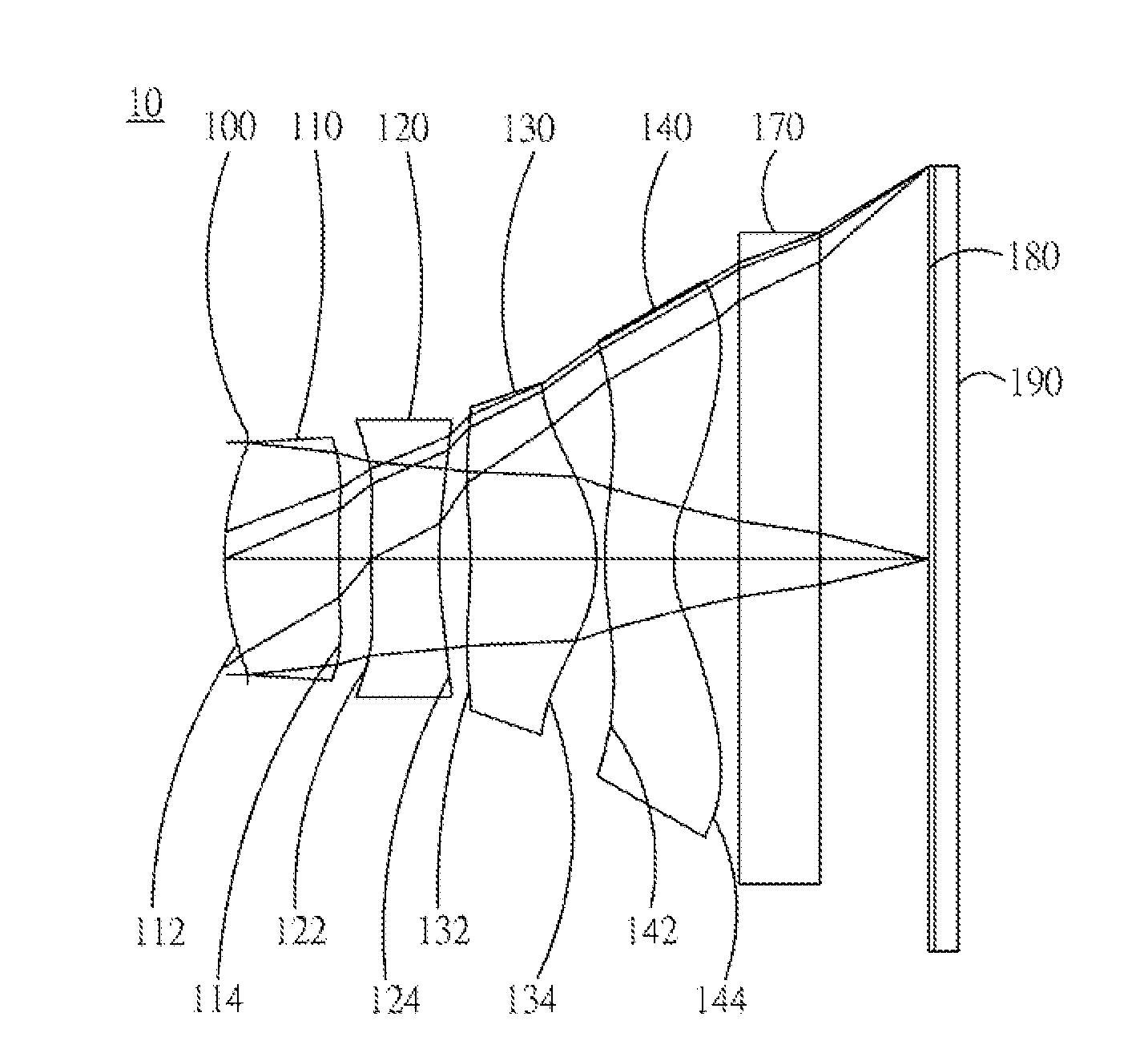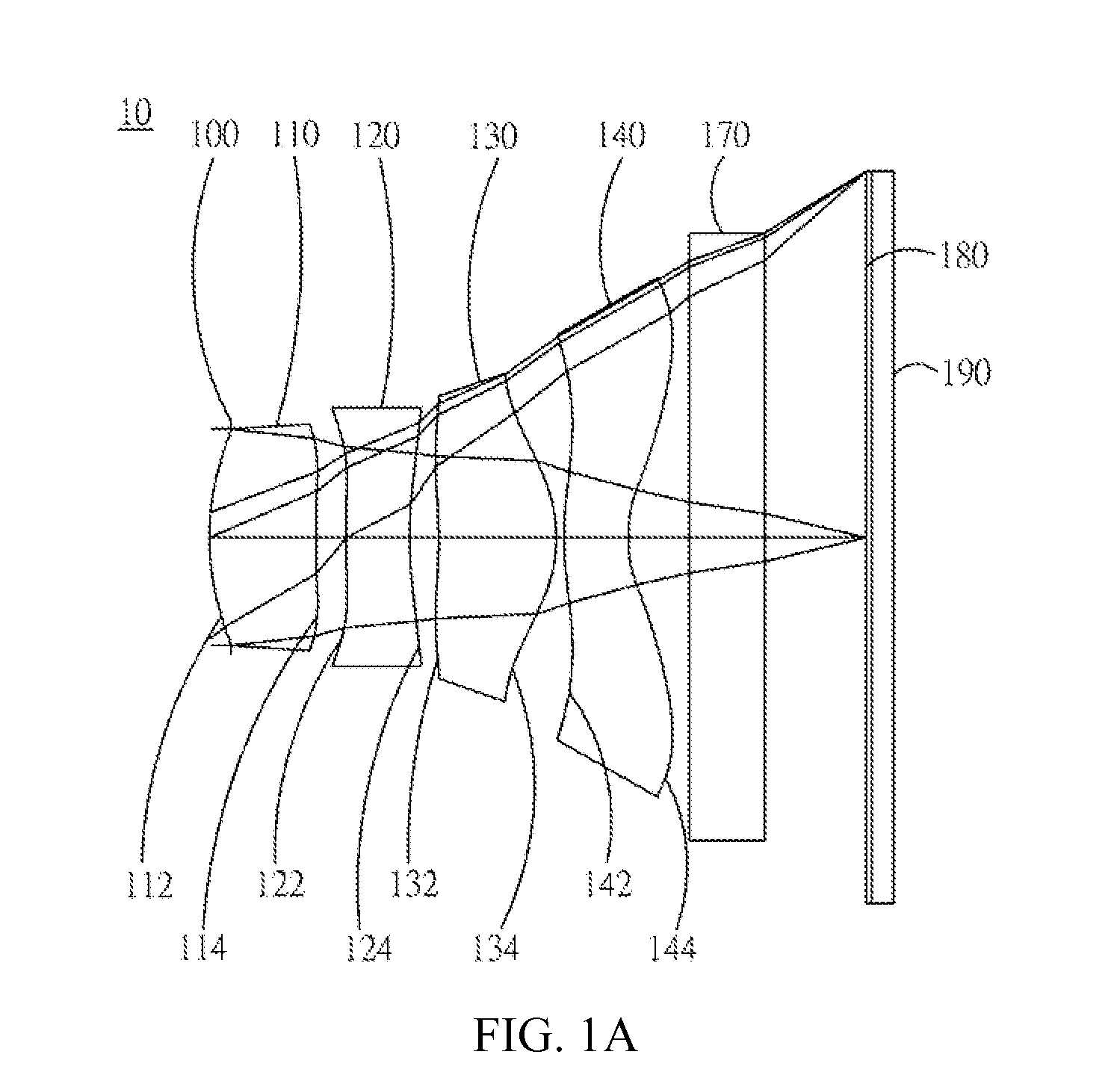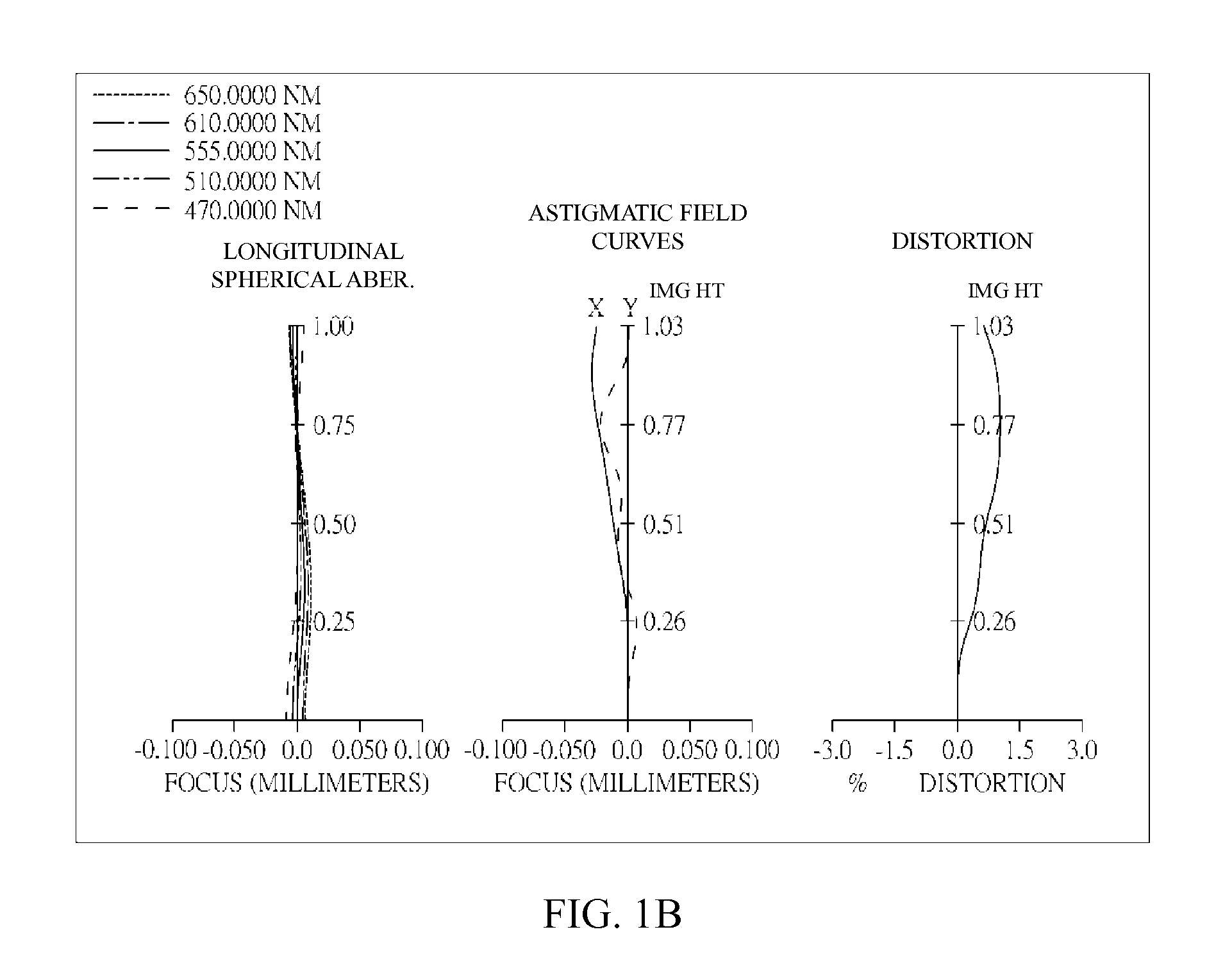Optical Image Capturing System
a technology of optical system and image, applied in the field of optical image capture system, can solve the problems of degrading image quality, complicated manufacturing process, and design of large aperture stop system that often encounters more difficult technical problems, and achieves the effects of reducing the height of the optical system, reducing the back focal length, and improving imaging quality
- Summary
- Abstract
- Description
- Claims
- Application Information
AI Technical Summary
Benefits of technology
Problems solved by technology
Method used
Image
Examples
first embodiment
The First Embodiment
Embodiment 1
[0103]Please refer to FIG. 1A, FIG. 1B and FIG. 1C, FIG. 1A is a schematic view of the optical image capturing system according to the first embodiment of the present application, FIG. 1B is longitudinal spherical aberration curves, astigmatic field curves, and an optical distortion curve of the optical image capturing system in the order from left to right according to the first embodiment of the present application, and FIG. 1C is a TV distortion grid of the optical image capturing system according to the first embodiment of the present application. As shown in FIG. 1A, sequentially arranged from an object side to an image side, the optical image capturing system includes an aperture stop 1, a first lens element 110, a second lens element 120, a third lens element 130, a fourth lens element 140, an IR filter 170, an image plane 180, and an image sensing device 190.
[0104]The first lens element 110 has positive refractive power and it is made of plast...
second embodiment
The Second Embodiment
Embodiment 2
[0149]Please refer to FIG. 2A, FIG. 2B, and FIG. 2C, FIG. 2A is a schematic view of the optical image capturing system according to the second embodiment of the present application, FIG. 2B is longitudinal spherical aberration curves, astigmatic field curves, and an optical distortion curve of the optical image capturing system in the order from left to right according to the second embodiment of the present application, and FIG. 2C is a TV distortion grid of the optical image capturing system according to the second embodiment of the present application. As shown in FIG. 2A, sequentially arranged from an object side to an image side, the optical image capturing system includes a first lens element 210, an aperture stop 200, a second lens element 220, a third lens element 230, a fourth lens element 240, an IR filter 270, an image plane 280, and an image sensing device 290.
[0150]The first lens element 210 has positive refractive power and it is made o...
third embodiment
The Third Embodiment
Embodiment 3
[0165]Please refer to FIG. 3A, FIG. 3B and FIG. 3C, FIG. 3A is a schematic view of the optical image capturing system according to the third embodiment of the present application, FIG. 3B is longitudinal spherical aberration curves, astigmatic field curves, and an optical distortion curve of the optical image capturing system in the order from left to right according to the third embodiment of the present application, and FIG. 3C is a TV distortion grid of the optical image capturing system according to the third embodiment of the present application. As shown in FIG. 3A, sequentially arranged from an object side to an image side, the optical image capturing system includes first lens element 310, an aperture stop 300, a second lens element 320, a third lens element 330, a fourth lens element 340, an IR filter 370, an image plane 380, and an image sensing device 390.
[0166]The first lens element 310 has positive refractive power and it is made of plast...
PUM
 Login to View More
Login to View More Abstract
Description
Claims
Application Information
 Login to View More
Login to View More - R&D
- Intellectual Property
- Life Sciences
- Materials
- Tech Scout
- Unparalleled Data Quality
- Higher Quality Content
- 60% Fewer Hallucinations
Browse by: Latest US Patents, China's latest patents, Technical Efficacy Thesaurus, Application Domain, Technology Topic, Popular Technical Reports.
© 2025 PatSnap. All rights reserved.Legal|Privacy policy|Modern Slavery Act Transparency Statement|Sitemap|About US| Contact US: help@patsnap.com



